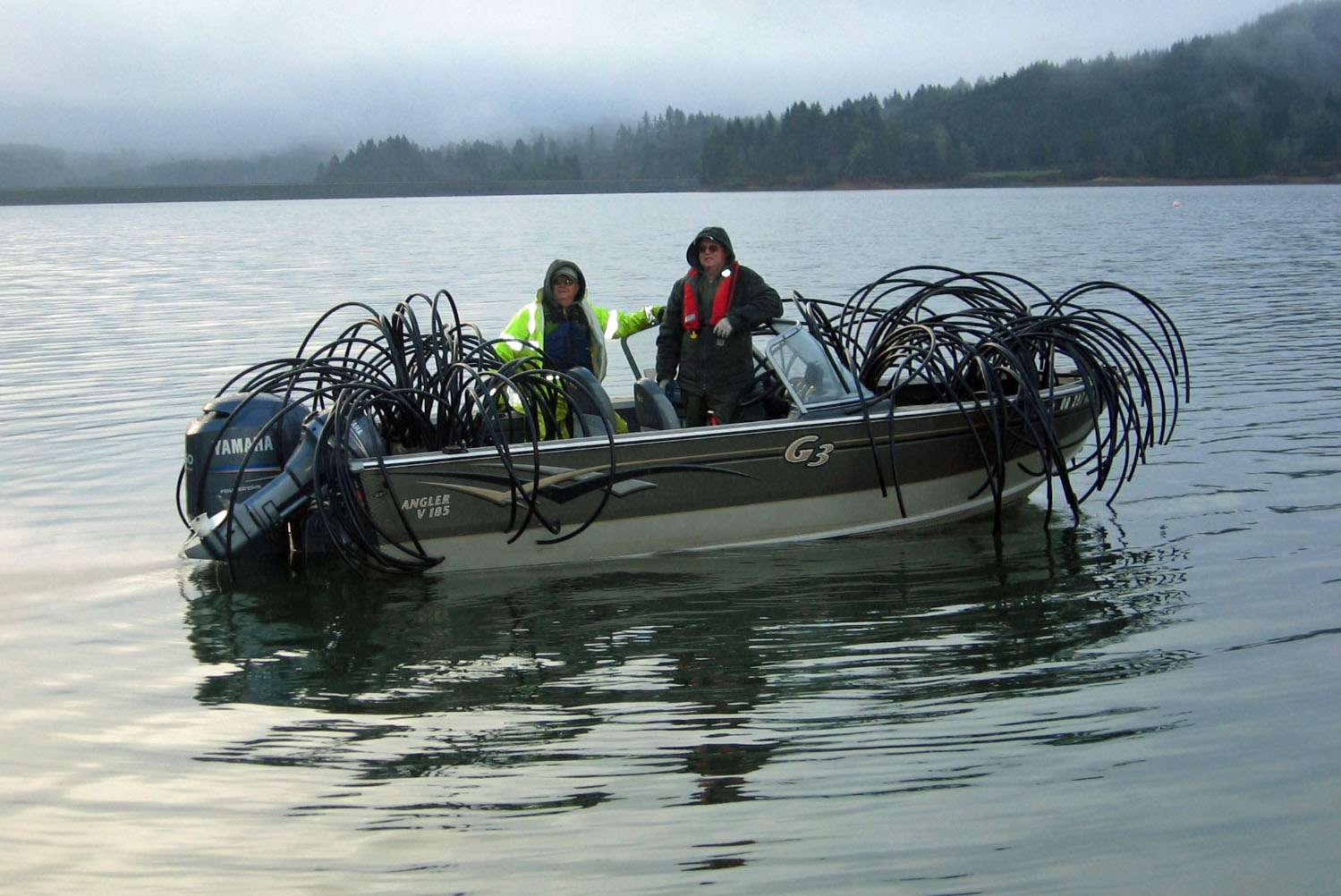
FOREST GROVE, Ore. — The Columbia River Bassmasters welcomed the winter trout season by helping add habitat to Henry Hagg Lake near Forest Grove.
“With the Washington County Parks Department’s cooperation and under the supervision of the Oregon Department of Fish and Wildlife,” said Don Randolph, “the Oregon Bass and Panfish Club and the B.A.S.S.-affiliated Columbia River Bassmasters slipped behind the lake’s closed gates and dropped 102 spider blocks into the lake’s shallower reaches.”
The spider blocks are cinderblocks with 14 arcing polyethylene pipes. They provide habitat for bass, panfish and trout.
“This marks the third year of placing the structures,” added Randolph, “with 292 now resting on the lake bottom in the no-wake zone, well outside of the water-skiing area.”
The bed of Hagg Lake has little or no structure to offer protection to fish from predators. Decades ago, Christmas trees were placed in the lake, but they have long since silted over or decayed. Next came specially designed plastic blocks with large holes to allow fish passage in and out. These Fish-Habs (made by Berkley) are artificial, underwater habitat structures made from recycled monofilament fishing line and line spools, along with other post-consumer materials like milk cartons and soft drink bottles.
“Spider blocks, relatively indestructible, have proved their value across the nation,” said Randolph, “and have been successfully used in other Oregon locations. The Central Oregon Bass Club placed them in Prineville Reservoir, for example. Global positioning systems are used to place and locate each structure, and this year’s plastic reefs were distributed in closer proximity to each other than those in the past.”
The organizations plan to add another 100 spider blocks to Hagg in 2015.
The blocks can be snagged by anglers, but the plastic tubing bends easily and minimal fishing tackle is lost. To get a better idea of why and how these blocks attract fish, the Columbia River Bassmasters produced a YouTube video showing the structures underwater. You can watch it below:
